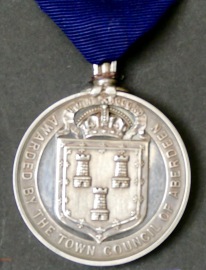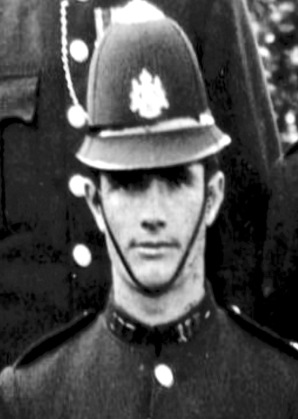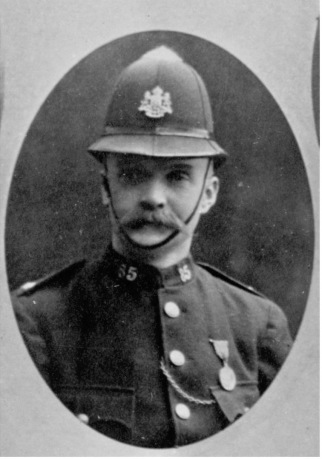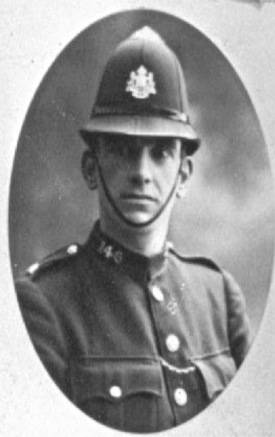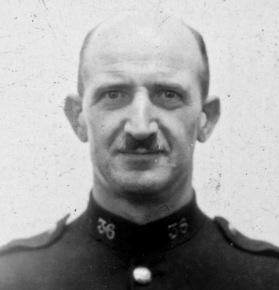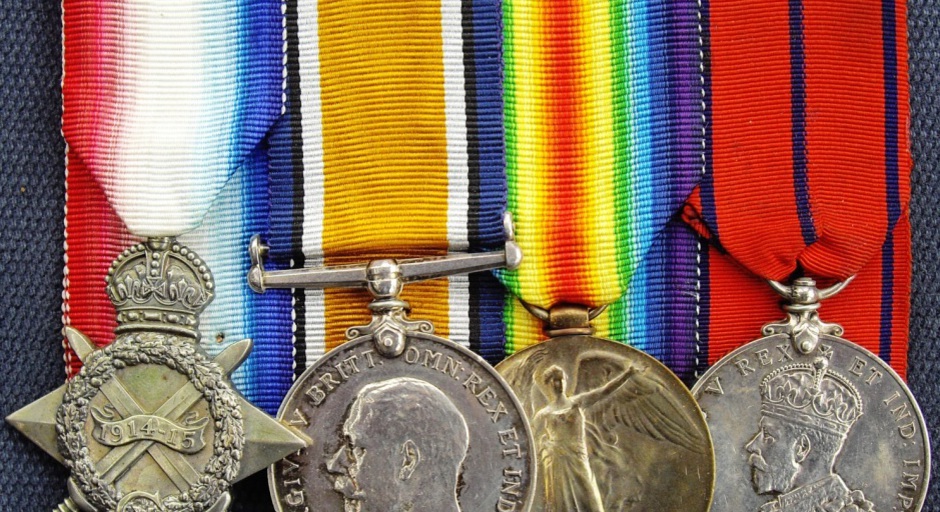
Aberdeen City Police 1818 - 1975
THE ABERDEEN CITY POLICE SPECIAL SERVICE MEDAL
Introduction
The following is an interesting and informative article by Steve Grainger, a serious collector of medals and concerns the rather scarce Special Service Medal of Aberdeen City Police.
Steve has identified the recipients of the only four medals out of the six medals struck in 1909. He has also uncovered a mystery as to the location of the only unidentified example, a gold-plated version awarded to PC Donald Dunnet in 1910.
Aberdeen City Police were formed in 1818 and existed up until 16 May 1975 when they amalgamated with Scottish North Eastern Counties Constabulary (SNECC), to form Grampian Police.
SNECC had been formed in 1949 from Aberdeenshire Constabulary, (1840), Banffshire Constabulary, (1840), Kincardineshire Constabulary, (1841), Elginshire, (1844) incorporating Elgin Burgh Police, (1850) and Nairnshire Constabulary, (1850).
What follows is an edited version of Steve’s research into the four recipients of the Aberdeen City Police Special Service Medal.
My sincere thanks to Steve for permission to publish his work here.
Identification of the Medal and Beginning the Research
A recent addition to my collection has been a single silver Aberdeen City Police Special Service Medal.
When purchased, I knew I was adding something very special after referring to the late John Green’s book, ‘Scottish Insignia as used by old Police Forces’ in which he classified the medal as Extremely Rare. At the time of purchase I did not realise how rare, and how convoluted the research into the medal would become.
The medal arrived un-named and my information at the time confirmed that is how it was issued. There appeared to be no hallmarks on the medal.
My first contact with Aberdeen City Archives referred me to the Honorary Curator of the Grampian Police Historic Collection via e-mail. A reading of ‘The Diced Cap’, a history of Aberdeen City Police by the late ex-Chief Superintendent Hamish Irvine, was also recommended.
Establishing exactly when the medal was first instituted was difficult due to there being conflicting accounts of the date of introduction of the medal, the numbers manufactured and the numbers awarded. Eventually, I established the following.
The medal was instituted after an approach was made to the city Watching Committee by Chief Constable William Anderson.
Decision to Grant the Award of the Medal by the Watching Committee
The representation by the Chief Constable took place on 30 June 1909 and was approved by the committee on 5 July 1909. The representation to the watching committee stressed his desire to recognise acts of gallantry or tenacity above what one would expect from the line of normal duty. For some time such acts had been rewarded by a small financial benefit after the Chief Constables recommendation.The Chief believed that a Special Service Medal awarded on such occasions would be a permanent recognition of any meritorious acts and would act as a boost to the force morale leading in the long term to greater efficiency.
The committee agreed and a design was approved. A die and an initial small batch of medals were ordered through George Jamieson, a local jeweller. The die was manufactured and medals were ordered at an estimated cost of £9 for the die and 15/- (75p) for each medal plus the cost of presentation boxes, the cost of which has not been recorded. The name of the jeweller was printed in the silk of the presentation box lid and the business in a slightly different form exists today. Unfortunately the company retains no records from that period.
Shortly after the medal purchase was approved, the Watching Committee made payment of £18-1s-10p ( £18-09p) to the jeweller. This was the only payment to Geoge Jamieson in 1909 and suggests that the account was for the cost of six medals, their presentation cases and the preparation of the medal die. The unit of measure at the time was the dozen (12) and gross (144). Half a dozen (6) was a common quantity of purchase at the time.
When delivered, the medals were stored at Aberdeen City Police Headquarters, Lodge Walk, Aberdeen, pending issue on the recommendation of the Chief Constable and the approval of the Watching Committee.
The First Award to PC 177 William Ritchie
A search of the Watching Committee minutes revealed that the Chief Constable recommended the first award be made to Police Constable (PC) 177 William Ritchie.
The recommendation was approved. Contemporary newspaper reports confirmed the award. William Ritchie was born on 23 July 1879 in Aberdeen. He was 5’10” tall on appointment to the force on 17 November 1900. He gave his occupation as a Labourer and he was unmarried.
His career progressed through to 1st class constable by 1903. His only defaults in his 28-year career were three occasions when he was late for duty for which he was both reprimanded and fined 5/- (25p) on two of those occasions. His sickness record was also sparse in recorded time off duty sick totalling 89 days in 28 years’ service. He married in August 1904 and was the father of three children.
The Incident Leading to the Award of the Medal
On 27 February 1909, PC. Ritchie was on night duty foot patrol when his attention was drawn to noises from the bar at ‘The Nineteenth Hole’ of the local golf club. He found two burglars on the premises. One escaped by diving through a window, the other he arrested. The burglar did not come quietly! For fifteen minutes a violent struggle took place in which both PC Ritchie and the burglar received serious injuries.
The battle resulted in the two men rolling into the Green Keeper's prepared lime pit and both received burns as a result.
PC Ritchie eventually gained control of the burglar and secured him with a clothes line until help arrived. His injuries included lacerations to his throat and neck causing scarring which he carried for the rest of his life. He was off-duty through his injuries for the majority of the following month. ‘The Scotsman’ newspaper described his injuries in the 22 October 1909 edition as PC Ritchie having been ‘severely mauled’.
When approving this first award of the newly instituted Special Service Medal the Watching Committee also granted PC Ritchie a gratuity of 21 shillings (£1-05p)
PC William Ritchie was promoted to the rank of Sergeant on 3 August 1919. He passed a further promotion examination in 1921 but remained as a Sergeant until he retired to pension on 18th. November 1928.
The photograph of PC Ritchie above, taken at the Inspection of the force in 1923 shows the scarring to his neck following the violent attack that gained him his Special Service Medal.
Presentation of the Medal, 1909
Councillor Milne, the convenor of the towns’ Watching Committee presented PC William Ritchie with his medal at a ceremony in front of most members of the City force on 21 October 1909. The presentation was covered by many of the local newspapers.
The Second Award to PC 85 Donald Dunnet
The next and second presentation of the City Special Service medal was made to PC Donald Dunnet on 6 June 1910.
PC Dunnet was born on 5 April 1871 at Pulteneytown, Wick.
On joining the force on 14 June1895, his occupation was Farm Servant. He was 5’11” tall, married with one son. On 3August 1897 he was promoted to the rank of 1st class Constable. His patrol area was a foot beat in Aberdeen dockyard.
He had a chequered career with a variable record including commendations for good conduct and fines for allowing alcohol to influence his duty!
In 1914 and 1916 he was fined by the Chief Constable for being Drunk on Duty. His sickness record was reasonable, having 173 days off duty sick in a career span of 30 years.
Included in his sickness record was a period of 35 days as a result of fractured ribs. How this injury was received is not recorded.
The Incidents Leading to the Award of the Medal
His award was proposed by the Chief Constable and approved by the Watching Committee not for a single act but a series of commendable conduct over a period of seven years that brought him to notice.
All of PC Dunnet’s activities were dockyard rescues from drowning on five separate occasions as recorded by the Aberdeen Journal on 4 August 1910.
The award was more praiseworthy by the fact that PC Dunnet was not an accomplished swimmer. On 10 November 1903, he was instrumental in rescuing a man from the dock using the equipment available on the dockside. Again on 19 March 1904, he again used dockside equipment to rescue a man from the Albert Basin. On the night of the 18 January 1906 he rescued a man from the Albert Dock who was in danger of drowning. On 20 April 1906, a trawler skipper slipped and fell from the stern of his boat and fell into the dock. PC Dunnett rescued him by astute use of the dockside lifebuoys.
On 15 April 1910, PC Dunnet successfully rescued a fireman who had fallen into the dock and was in danger of drowning. It was this last act that prompted the Chief Constable to make his recommendation to the Watching Committee. These were the main rescues in which he was instrumental in saving life although newspaper reports imply that other similar incidents occurred.
The Watching committee were so impressed with these examples of bravery and resourcefulness over a period of years that when approving the medal they ordered it to be gold plated.
PC Dunnet remained a constable throughout his service and his good work in detecting a devious and lucrative fish yard theft was rewarded with a Chief Constables commendation.
PC 85 Donald Dunnet can be seen wearing his Special Service Medal at the Force Inspection in 1923 in the picture above.
Donald Dunnet retired on pension on 15 June 1925 after 30 years-service.
The Third Award to PC 146 Cameron McArthur Forbes
The third Special Service Medal was awarded to PC Cameron Forbes on 27 June 1929.
Cameron McArthur Forbes was born on 30 September 1898 in Banff. He was appointed to Aberdeen City Police as a Constable on 16 March 1921 after serving 2 years and 10 months with the Army. Prior to his military service he was employed as a Farm Servant. He was a single man at the time he was appointed to the force.
The Incident Leading to the Award of the Medal
On 12 May 1929, whilst on duty alongside the Albert Dock he saw a boy fall from a fishing boat into the dock basin. The 14-year-old boy, Alexander McLauchlan, was struggling and PC Forbes dived into the dock in full uniform, swam to the boy through marine traffic, pulled him to the side, and rescued him from drowning. The act was made more commendable by the fact that he did not hesitate to enter the water though he was not a strong swimmer. The serge uniforms of the time quickly became saturated and made swimming exceedingly difficult.
Presentation of the Medal, 1929
The Watching Committee had no hesitation in approving the Chief Constables recommendation and PC Forbes was presented with his medal on the 27 June of the same year.
PC Forbes distinguished himself again on 1 February 1930 with a similar rescue in the Albert Dock. George Day, a Trawler-master and non-swimmer who fell into the deep water was rescued by PC Forbes. His actions were recognised by the Chief Constable who awarded him a Commendation on the 12 February of that year.
In August 1934, PC Forbes was admitted to Aberdeen Royal Infirmary for an unspecified operation. His sickness record whilst a member of the force being very good having only 26 days on sick leave in the previous 13 years.
His premature death occurred in the hospital on 10 August 1934. When reporting his death in the 11 August edition of the Dundee Courier, it was mistakenly claimed that PC Forbes was the only member of the city force to hold the council’s medal for gallantry. He was 37 years old and only recently married.
His funeral with a full Police Pipe band and 80 uniformed officers in attendance took place a few days after his death. PC Forbes had married a telephonist at police headquarters in April 1934 only four months before his death.
PC Forbes picture can be seen above.
The Fourth Award to PC 46 John Main
The fourth and last medal recommended by the Chief Constable and approved by the Watching committee was awarded to PC John Main. The recommendation was placed before the Committee on the 25 May 1936.
John Main was born at Portlethan,Kincardineshire on 25 April 1902. He was appointed on 29 May 1922 and was described as a single man, 5’10” tall, with dark brown hair, Grey eyes and a pale complexion.
His exemplary service record shows only one instance of neglect, being late to report off duty on 29 August 1929, for which he was fined 5 shillings (25p).
The Incident Leading to the Award of the Medal
PC Main was on supposed ‘light duties’ following a period of sickness. He was on foot patrol at 5.10pm. alongside the River Dee in an area identified as Allenvale Road near Duthie Park. His attention was drawn to a small boy crying for help on behalf of his friend, 10-year-old George Angus, who, when wading in the shallows had slipped and fallen into deep water.
PC Main assessed the situation and ignoring his lack of life saving capability, poor swimming ability and weakness through recent serious illness, stripped off his tunic and helmet and dived into the river to attempt a rescue. The boys head and arms disappeared below the surface as he was carried by the current to the middle of the river. PC Main located the child’s body and pulled him to the shore. The boy was transferred to Aberdeen Royal Infirmary where he recovered from his ordeal.
It was established that the boy could not swim at all, but PC Main, modestly claimed “There was little to do, I only got a wetting, I was only thirty yards from the spot where the boy slipped and fell, His chums’ cries attracted my attention.” (Aberdeen press & Journal reporter 11/05/1936.)
His service record does not record his award of the Aberdeen City Police Special service Medal, but the Watch Committee minutes dated 25 May 1936 clearly approves the presentation by the Chief Constable with the Watching Committee’s approval. His gallantry and subsequent medal award was also noted by the Aberdeen Journals of 11 and 26 May 1936.
PC Main’s medal was privately named and was eventually traced to the Grampian Police Historic Collection. His retirement date was not recorded.
Fast Forward to 2004
The storage rooms on the upper floor of Dyce Police Station, the former SNECC Headquarters on the outskirts of Aberdeen, contained everything from old uniforms, documents, artefacts, police equipment and medals. The building was approaching obsolescence and due to be sold. The history of the force was contained in that room and it was well known that officers giving lectures to various organisations over the years had been encouraged to use/borrow/remove items for use in their public presentations.
The historic value of the station contents was fortunately recognised, and Geoff Marston was appointed as Curator of the Grampian Police Historical Collection with the mandate to sort, catalogue, prepare and display the artefacts.
When he opened the door it was reminiscent of Howard Carter opening Tutankhamen’s tomb. Stacks of boxes, packets, parcels and miscellaneous insignia piled in an un-coordinated manner. He commenced the task given to him and one of the first bundles according to the label was two red ‘Aberdeen’ labelled medal boxes containing the Special Service Medals of PC’s Dunnet and Main.
Marston quickly established the authenticity of the awards and placed them in a display case with a printed title explaining that the medal had only been awarded on 4 occasions since its inception in 1909. Sometime later he uncovered an official photograph of Donald Dunnet’s medal taken in 1987 which clearly showed the inscription dating the medal from 1903 to 1910. A third un-issued medal in its presentation case was also found in the store. John Main’s medal had been displayed showing the reverse face whilst Dunnet’s medal was displayed with the obverse face visible. Three of the original six medals were accounted for.
Geoff MARSTON is still the Honorary Curator of the Grampian Police Historical Collection and apart from a period from 2007 to 2011 has maintained this role. His assistance in researching the Special Service Medal has been invaluable.
Fast Forward again to March 2019.
In March 2019, I acquired my example of the Special Service medal through a fellow collector who was assisting the widow of another collector in disposing of his collection. He already possessed an example of the medal and offered me the ‘spare’ medal. I agreed the purchase immediately.
Research started the same day. When offered the medal I had consulted three reference books in my study. Campion’s ‘Police Medals of the World’, John Green’s ‘Scottish Insignia as used by old Police Forces’ and Token publishing’s ‘Medal Year Book’.
Unfortunately the entries in both Campion’s and Tokens volumes were unverified and led me into blind alleys of confusion. The facts did not fit.
I approached the Aberdeen City Archives and was advised that personal records for the old city police did not exist, but they held The City Police ‘Register and Defaulters’ books. It was at this time that I was advised to obtain a copy of the late ex-Chief Superintendent Hamish George Irvine’s book ‘The Diced Cap’, a history of Aberdeen City Police and introduced to Geoff MARSTON.
Over the next few months many e-mails and telephone conversations helped to clear the majority of the anomalies created by my initial trawl through the known reference works. I anticipated negative and possible aggressive responses to some of my enquiries considering I was challenging the statements outlined. This was not the case and Roger Campion admitted that his research consisted of telephone enquiries. Token publishing placed the enquiry beforetheir publishing team but my question regarding sources was too far back to assist (2002). John Green sadly passed away in 2010 and his widow has since re-married and moved out of the UK mainland. When traced she could not help but passed me details of the auctioneers who conducted the sale of his medal collection. This information led me up another blind alley, the auction company had been placed in administration earlier this year (2019) and the administrators have failed to respond to enquiries.
The relevant entry in John Greens book clearly indicated that he had owned and held a gilded or gold-plated version of the Aberdeen Special Service Medal. Only one of the medals produced was declared universally as being ‘Gold’ (or gilded) and that was awarded to Donald Dunnet.
Geoff Marston immediately removed the medal in the display case in Aberdeen allegedly awarded to Dunnet and examined the reverse face. No trace of naming as in the 1987 photograph was evident, so the medal on display was obviously not the one awarded to Dunnet and the original was now missing! Dunnet’s medal had at some time prior to the collection being catalogued and the photograph discovered, been removed from its presentation box, the second of the un-issued medals in the store replacing it and was now ‘out there, somewhere’. All six medals were now accounted for but only 5 located.
The trail of Donald Dunnet’s medal vanishes with the sale of John Green’s collection in 2011. The medal illustrated in his reference work appears to have been deleted on the reverse face where the engraving had taken place. The medal dealer who sold the second un-named medal in private hands remembered the sale but had no records going back the eighteen years since the transaction took place.
At this time, we had traced 5 medals, issued between 1909 and 1934. Searching the pre-mentioned registers in the Aberdeen Archives confirmed the issue of the medals to three of the four recipients. John Main’s record was lacking many details including the awarding of his medal. The registers, however, did confirm that the statements in ‘The Police Medals of The World’ were inaccurate and the officer allegedly awarded a gold medal following his death in a violent arrest had in fact died, on duty, after falling over an embankment on bicycle patrol.
Newspaper archives were then searched for references to any of the incidents involving the officers and their respective awards including the death as reported in Campion’s reference book. All the facts uncovered were confirmed in at least two newspaper columns and the minutes of the Aberdeen City Watch Committee.
The lids of the medal presentation boxes in the Grampian Historical collection gave the identity of the supplier, a local jeweller who is still trading today although unfortunately their records do not go back into the twentieth century. The Watch Committee minutes were again searched for payments made to that company and the single entry found which corresponded with the quotation given to the committee plus the cost of the presentation cases.
The trail will never be complete until Donald Dunnet’s medal is located and we can properly identify it as the gilded medal John Green had in his collection. This may be difficult if the current holder realises that the medal was probably ‘borrowed’ from the Grampian Police Historical Collection around 1989/90.
We will just have to wait and see what the future holds.
I will probably never know to whom my Aberdeen Special Service Medal was awarded but I do know it was either PC William Ritchie or PC Cameron McArthur Forbes. As I have already stated, ‘we will have wait and see what the future holds.’
Sources & Credits
Mr. Geoff MARSTON ( Hon. Curator Grampian Police Historical Collection)
Ms. Kay Kavanagh (Aberdeen City Archive)
Mr. Martin Hall (Aberdeen city Archive)
Members of the British Medal Forum
Mrs. Margaret Graham (Widow of the late John Green)
Mr. David Picton-King
Mr. Ian Hall
References
Token Publishing Medal Year Book
‘The Diced cap’, a history of Aberdeen Police by Ch. Supt. Hamish Irvine.
Scottish Census (Ancestry.co.uk)
Aberdeen City Council Watch(ing) Committee Minutes
Newspaper References
Police Review & Parade Room Gossip
The Aberdeen Press and Daily Journal
The Scotsman
The Dundee Courier
John O’Groats Journal
